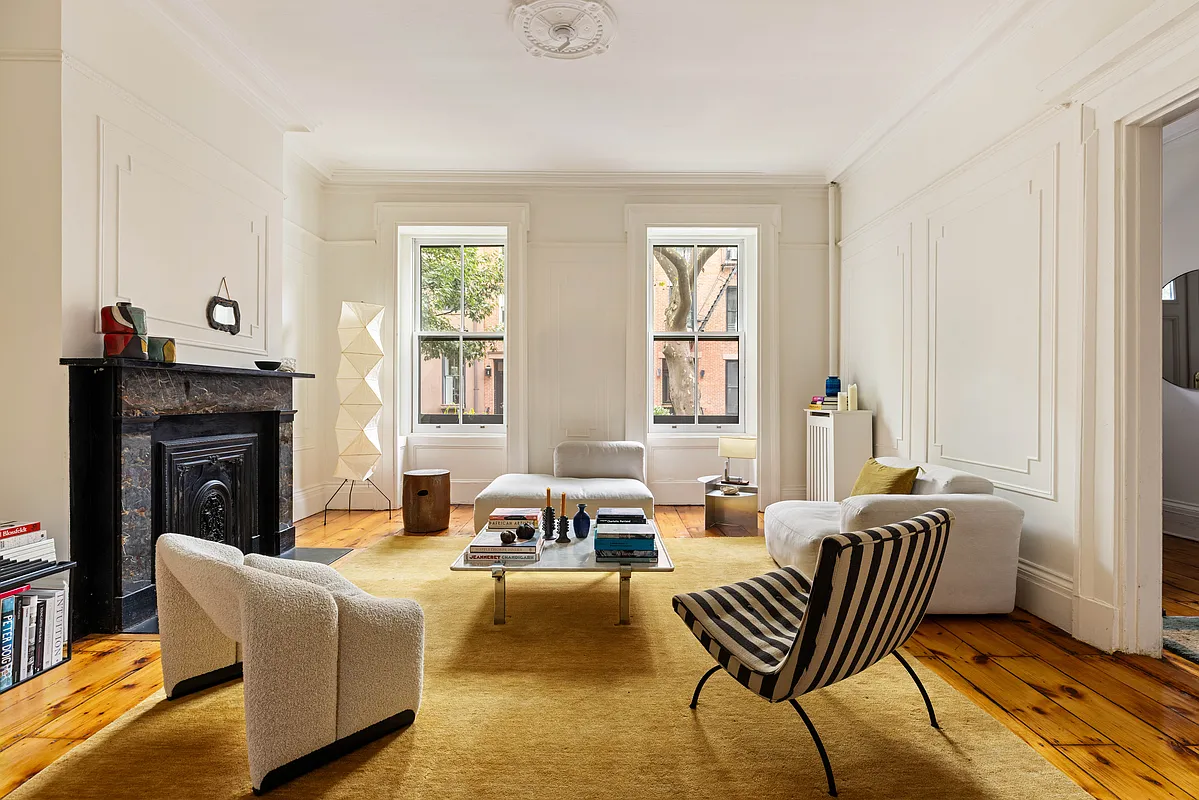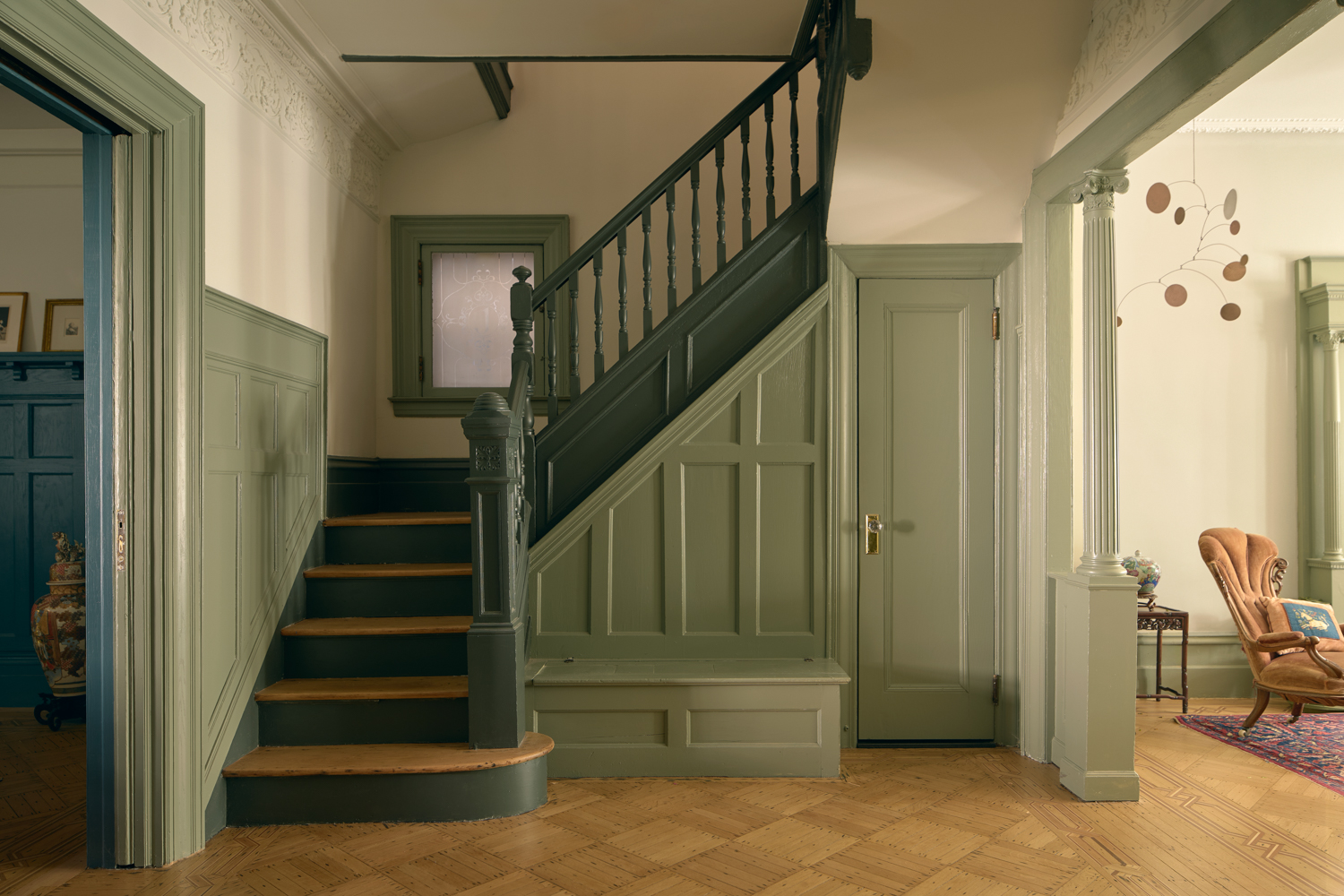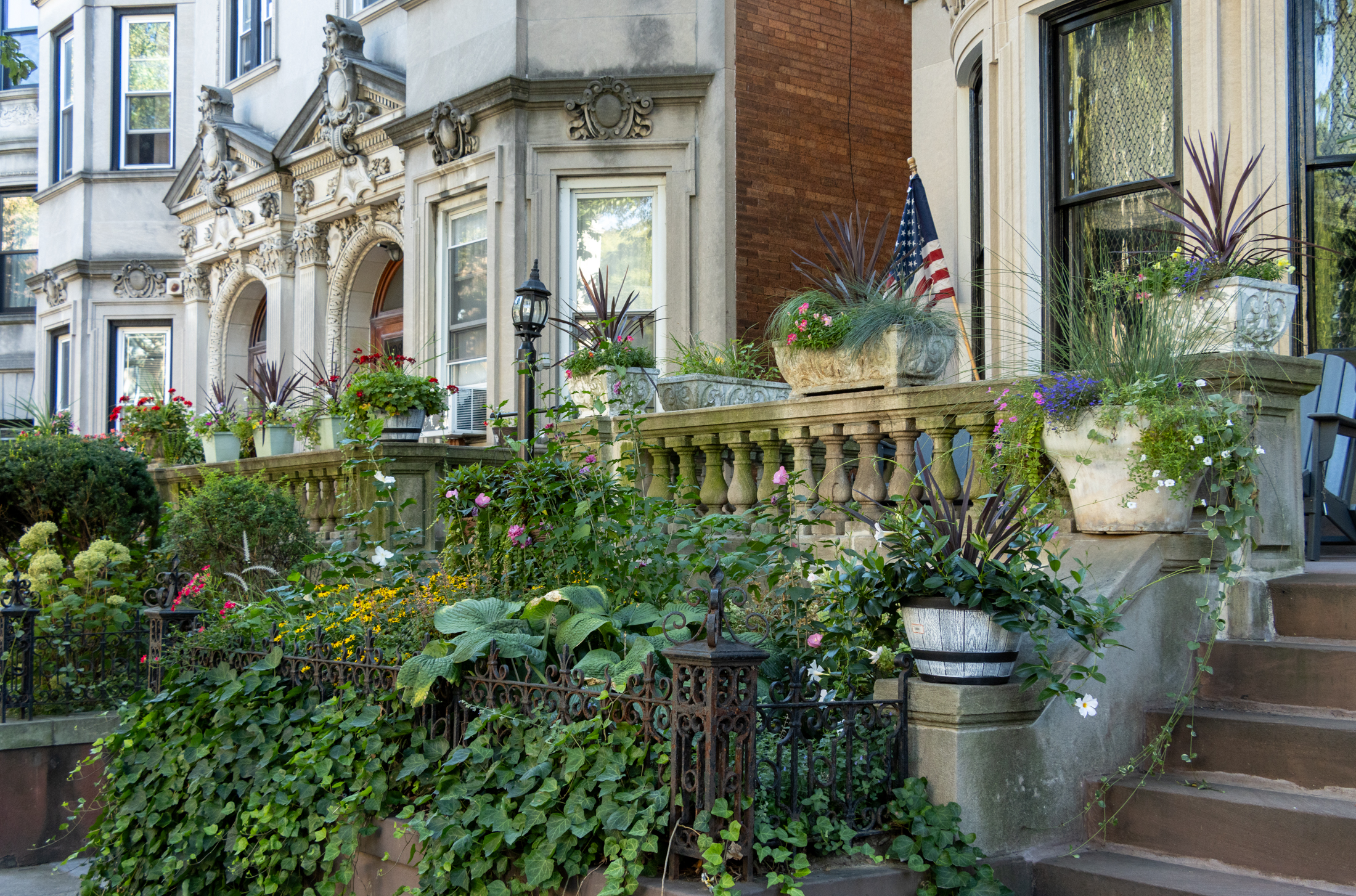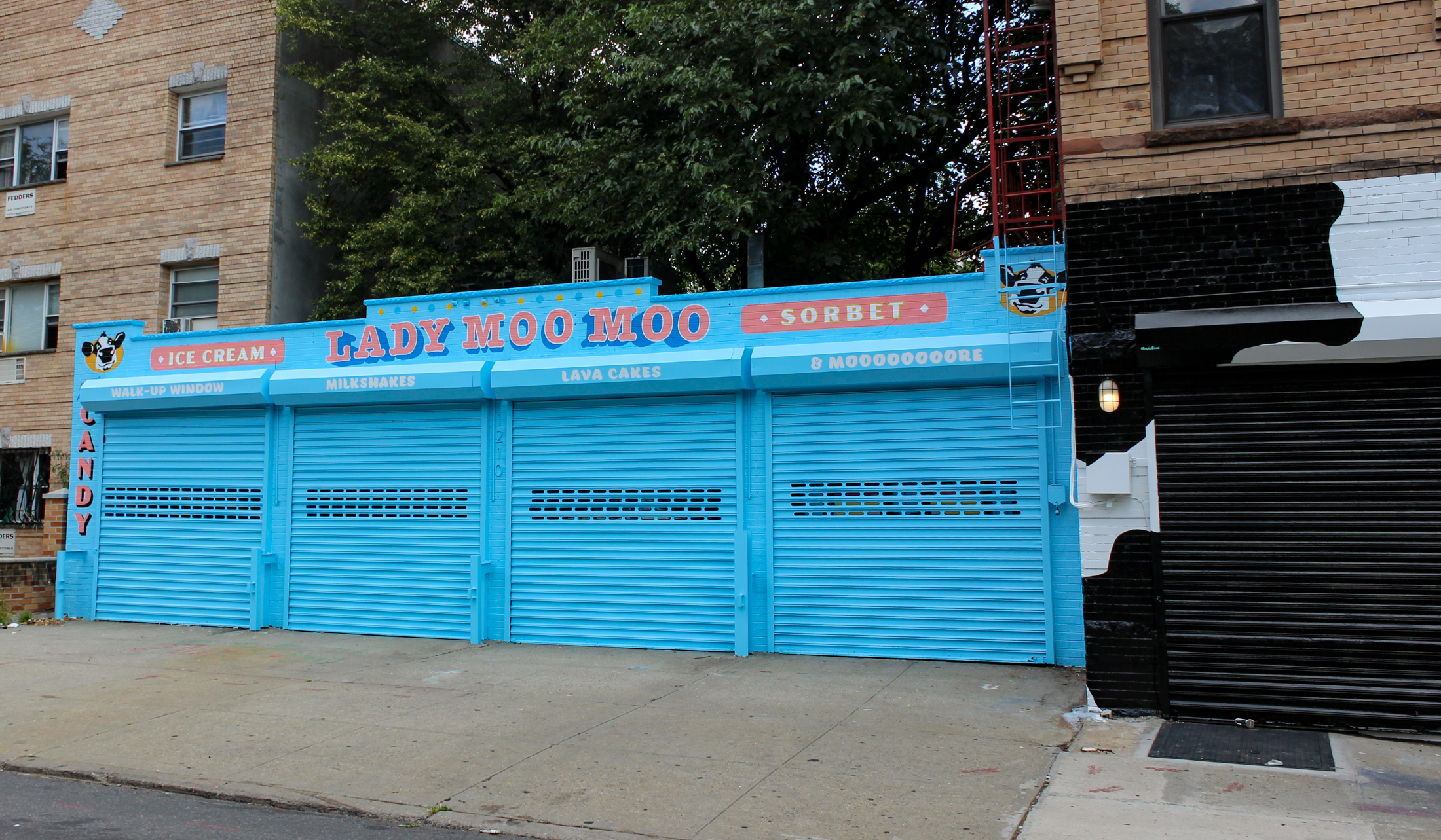Walkabout: Clash of the Titans, Part 1
(1909 Postcard) Imagine, if you will, a large public works project, an armory, built to house one of Brooklyn’s oldest and most revered regiments. This armory will be state of the art, and big, really big, because it needs to house, well a regiment, and regiments need space to train, run drills and exercises year…


(1909 Postcard)
Imagine, if you will, a large public works project, an armory, built to house one of Brooklyn’s oldest and most revered regiments. This armory will be state of the art, and big, really big, because it needs to house, well a regiment, and regiments need space to train, run drills and exercises year round, not to mention space for offices, clubrooms, rest and relaxation, and study. There’s also the matter of building a structure that will strike fear in the hearts of would-be anarchists and criminals, and impress everyone with its size, grandeur, and all around awesomeness. This building will be a coup for its commander, the mayor, various commissioners, and the architect, and the people of Brooklyn. It’s also a big ticket item that will produce jobs for years for anyone connected to it, from the architects and supervisors, down to the lowliest workman. An armory is a big deal, and big bucks. It also attracts big egos, and no egos and personalities were bigger than those of the colonel of the 13th Regiment, Colonel David E. Austen, and the architect of the project, Rudolph L. Daus. If this was a movie, I’d cast Daniel Day Lewis as Rudolph L. Daus, and Gary Oldman as Colonel Austen. Only consummate scene chewers could play these men who were larger than life, and whose clashes would so completely entertain and disgust Brooklyn for almost 5 years. This is their story.
We have to start with the regiment. Brooklyn’s 13th Regiment dates back to the 1830’s. By 1874, after moving a couple of times, they were housed in the Flatbush Armory, which stood where the Long Island Railroad Station now stands, at Hanson Place and Flatbush Avenue. By around 1888, after years of complaining that they needed more room and that the building was not suitable and then being denied funds or an addition to their armory, Colonel David E. Austen successfully convinced the city of Brooklyn, and the state of New York to build a new armory for the 13th. A sum of $300,000 was budgeted for the project by the city, and a commission consisting of the mayor, the Park Commissioner, the County Clerk, County Treasurer, and Colonel Austen sat down to make plans.
They decided to have a contest to choose the architect and design. The participants in the contest would submit drawings and plans under pseudonyms, so no one would be influenced by knowing who the architect really was, and therefore the design would go to the best man, thereby serving the best needs of the regiment, as well as the people of Brooklyn, and the pocketbooks of its citizens. The new armory would be located in Bedford, a growing upscale community, now rapidly developing with fine townhouse rows going up as fast as they could be built. The armory would be built on the large lot purchased by the city, on Sumner Avenue, between Jefferson and Putnam Avenues.
By 1890, the Commission was still deciding amongst the plans. The top six plans had been submitted under the names Veteran, Mars, Vulcan, Par Oneri, Red Seal and Brooklyn. Veteran turned out to be William Mundell, a well-known architect who had designed the Brooklyn Hall of Records, the Raymond St. Jail, and the 47th Regiment Armory in Williamsburg, and would later design the 14th Regiment Armory in Park Slope. He had teamed up with Charles Werner, who was quartermaster of the 13th Regiment, and was, of course, a favorite of the regiment’s officers to win the commission. The other contestants didn’t think that was fair, naturally, and protested that their designs would get tossed. It turned out that Par Oneri was the prolific Parfitt Brothers, and Red Seal was Peter J. Lauritzen. Brooklyn was Alexander Ross and Charles Marvin, of Manhattan, and the front runner was Mars, aka Rudolph Daus, another of Brooklyn’s rising stars. An independent panel was appointed to decide between the top three, and they came to the conclusion that all three would go above the $300K budget, but Daus’ plan would be the easiest to scale down, and was the best one in terms of giving the regiment what they wanted, as well as coming in under budget. Daus was well known, and had a very good track record on public projects, and the politicians wanted him. Mars was declared the winner.
Well, no sooner did the word go out, than the accusations started. Daus was accused of being the flunky of Boss McLaughlin, the powerful Democratic leader in Brooklyn. Colonel Austen and his officers really wanted their quartermaster, Charles Werner and partner, William Mundell to win, and accused the rest of the commission of caving to political pressure and cronyism. The colonel made no bones about his distaste for Daus’ designs, and made a point of bringing it up at every public and private occasion that he could. Daus’ original design would have cost $100K more than budgeted, and he had to scale down the design considerably, and make other cost cuts. But in addition to being the architect of record, and accorded the usual percentage therein, as fee, Daus appointed himself as superintendent of the site, giving himself another couple of percentage points of fees. Austen was absolutely livid, and complained vociferously. It was March of 1890.
Bids were taken for all of the various building trades and materials, and the project was ready to roll, at least on paper. By 1891, they were still fighting. Colonel Austen found fault with everything Daus proposed. He didn’t like the plans for the exterior, especially the turrets planned. He didn’t like the plans for the interior, either. The public commission meetings for the armory were stalled with the constant fights between the two men. The final plans had not been made or approved. The Brooklyn Eagle, ever a magnet for controversy, covered every meeting religiously. In August of 1890, ground was to be broken on the project, and the corner stone laid. But, as the Eagle reported on August 30th, Instead of Jefferson Avenue being filled with the martial blare of trumpet, the tramp of soldiers, and the nodding of gay colored plumes, nothing is seen but the nodding of mullein stalks.
The paper went on to print the correspondence of the two men, which it called spicy. It boiled down to Daus writing Austen to say: I sent you the plans, what’s the problem? Austen to Daus: I didn’t get all of the plans, you didn’t send them all to me, and so I couldn’t make any decisions. Daus to Austen: Well, they are expensive, so if you want them all, I want you to be responsible for replacing them if you should lose anything. They’ll cost you $200. Austen to Daus: Well, I never heard of such a thing. You have MY sketches, and I’m going to have my attorney draw up a notice that charges YOU for their replacement if you should happen to lose MY drawings. Daus to Austen: Here are the new plans, but the Mayor said you are responsible for all of them. I sent them to your old armory. If you can’t find them, it’s not my fault. Austen to Daus: Just hurry up and send them already. I want this project done on time. Daus to Austen: Whatever.
At the next meeting, Austen complained that Daus had changed the plans and cut the length of the drill hall by 14 feet. He also said that Daus’ re-design of the tower was pretty, but robbed the hall of another 25 feet. Daus was out of town, and couldn’t be reached at that time. To no one’s surprise, the ground breaking would need to be rescheduled for a later time.
Next time: The battle continues. The armory slowly goes up. And you wouldn’t believe the problems. You can’t make this stuff up!

(Photo: Brooklyn Public Library. Flatbush Armory, home of the 13th Regiment from 1874 to 1894. Torn down for the LIRR station.)

(Photo: Brooklyn Daily Eagle. Sketch of entry by “Veteran”, the armory that Colonel Austen wanted.)





Minard, I was doing research last week for my article on Daus, and came across a lot of articles in both the Eagle and the Times (which were just rehashed Eagle articles) documenting their acrimony. They were covering like a boxing match. It was irresistable.
A question for Montrose: how did you discover the fraught relationship between the two men?
all that fun stuff at the other end of the building
Minard, was thinking of you will touring the new wing at Boston’s MFA. Most of the space is given over to their huge collection of objects, rooms and art from 1750 to 1850 you must go
Chris, thank you. You mean there were no giant inflatable mushrooms or dissected cows floating in formaldehyde?
I really must go.
Minard, was thinking of you will touring the new wing at Boston’s MFA. Most of the space is given over to their huge collection of objects, rooms and art from 1750 to 1850 you must go
Montrose, all good points. The public rooms in the armories were often quite beautiful and they usually functioned as military gentlemen’s clubs -no ladies of course unless invited by a gent.
But sometimes we forget that these really were armories. It is where guns and ammunition were stockpiled in case the citizenry got rambunctious.
Minard, Brooklyn had a lot of regiments, especially after the Civil War, and they were like military bases in the United States, every neighborhood or electorate wanted one, because building them meant money and jobs, and having one was a physical and psychological visible sign of protection against the mobs of immigrants and poor people who they really were afraid would rise up and lay ruin to everything. I think the Draft Riots scared them, and the latter third of the 19th century was full of strikes, many quite violent, by just about every blossoming union, which of course, was peopled by immigrants. They really were pretty xenophobic and paranoid.
On the positive side, armories were also great gathering halls, posh party places, and athletic facilities, something that is as desirable then as now, and neighborhoods wanted those close by, too. And cynically, they were a gold mine to corrupt politicians and their cronies, as most large civic projects always have been, and sadly, will probably always be.
I think it is really unusual that NYC has so many fortress/armories.
No other city I can think of has as many. In Brooklyn there are so many of them one would think we were a military outpost city. The City fathers must have been petrified that the masses would rise up at any moment, like happened during the draft riots. Especially all those foreigners and Roman Catholics (who were suspected to be part of a secret conspiracy controlled by the Vatican.)
The fortresses are splendid buildings but they are monuments to state control and paranoia, and I would add xenophobia. Really, how many regiments were needed to quell anarchist rebellions in Bedford Corners?